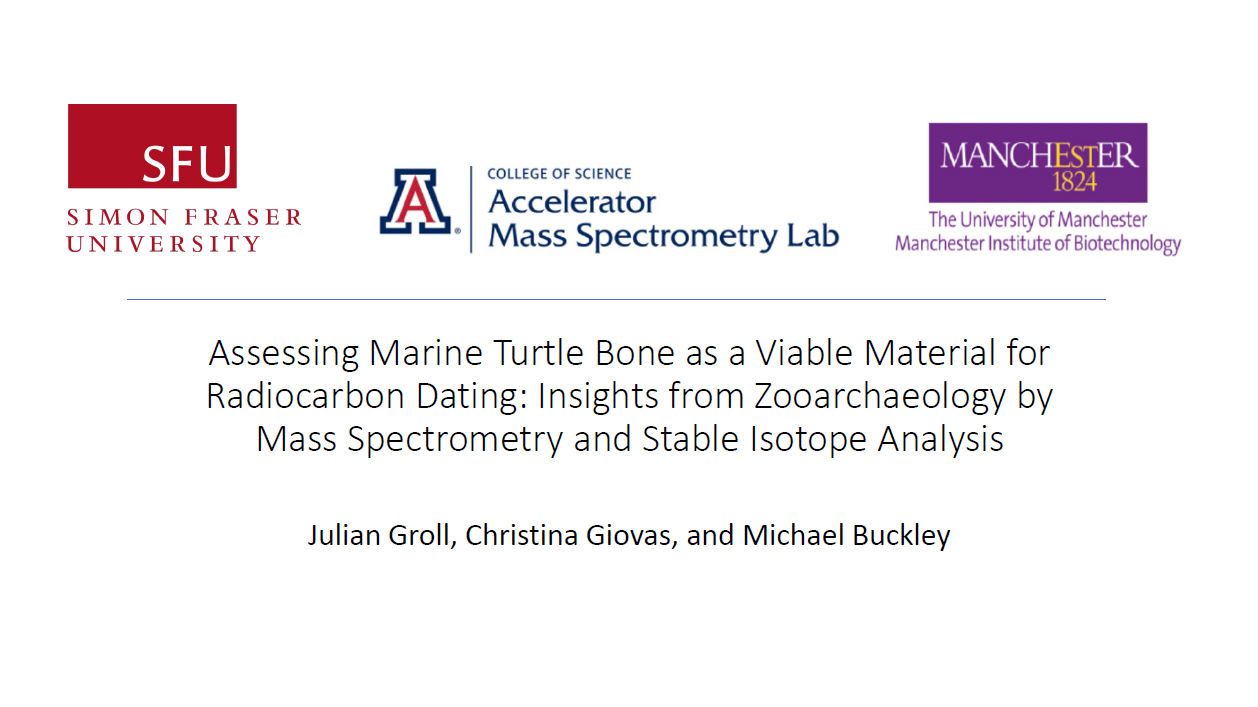Assessing Marine Turtle Bone as a Viable Material for Radiocarbon Dating: Insights from Zooarchaeology by Mass Spectrometry and Stable Isotope Analysis
Main Article Content
Abstract
Marine turtles have significant cultural relevance in the Caribbean archaeological record, especially evident at sites like Sabazan on the Grenadine Island of Carriacou. Despite abundance allowing for expediency with regard to dating material within the archaeological record, marine turtle bone is rarely selected for radiocarbon (14C) dating due to a phenomenon known as the marine reservoir effect (MRE) and the impact that it has on carbon-based materials. The marine carbon reservoir not only sees high degrees of spatiotemporal variability but is also subject to slower rates of 14C activity compared to that of the atmospheric carbon reservoir. This results in deleterious discrepancies between the apparent 14C ages of contemporaneous materials of marine and terrestrial origin, the former yielding relatively older dates than the latter, thus giving rise to the MRE. This research aims to quantify the MRE through the determination of a local deltaR (∆R) correction factor, establishing marine turtle bone as a suitable material for 14C dating. Zooarchaeology by mass spectrometry (ZooMS) has identified six specimens to species, comprising four hawksbill turtles (Eretmochelys imbricata) and two green turtles (Chelonia mydas). Challenges lie in accounting for the respective ecology of each species and the unique influence that ecology can have on 14C assay. The application of stable isotope analysis (SIA) unveils intricate ecological relationships, further informing the reliability of previously established cultural chronologies in addition to improving the temporal resolution of prehistoric marine turtle population dynamics, having direct applications to modern marine turtle conservation.
Faculty Supervisor: Christina Giovas, Department of Archaeology, Simon Fraser University
Article Details

This work is licensed under a Creative Commons Attribution-NonCommercial-NoDerivatives 4.0 International License.

